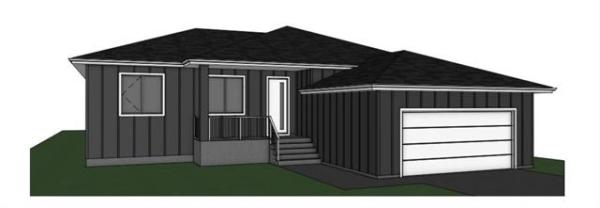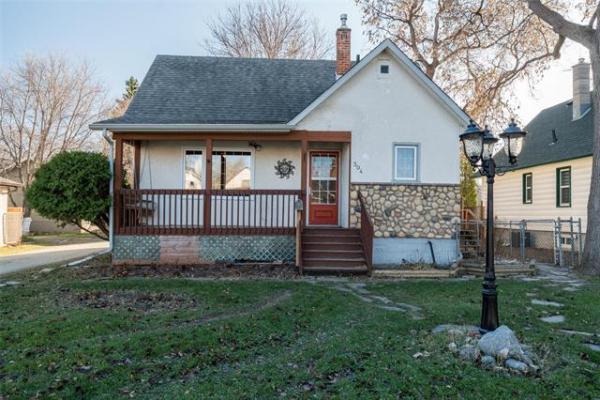Question: What are your thoughts on rubber paving blocks or rubber stone, as an alternative to total replacement, for an older concrete sidewalk? William K.
Answer: Replacement of an older settled or damaged concrete sidewalk with alternative materials is a good idea for our soil conditions. To ensure the long-term stability of any paving materials there must be a properly compacted base and curb support.
Concrete is one of the most commonly used building materials, especially for roads, garage pads, sidewalks or other exterior horizontal surfaces. It is extremely durable and able to withstand very heavy loads, vibration, precipitation and other environmental conditions. It also has some environmental benefits such as the ability to recycle some of the components. The main negative property, especially in our area, is the lack of flexibility. Even with the high density and weight of cured concrete, it will have a tendency to heave or settle with changes in environmental conditions. Because of our expansive clay soil in the Red River valley, movement over time is inevitable. This can be prevented, somewhat, by installation of a well compacted base of granular material before pouring.
The initial problem with poured concrete sidewalks may be uneven sinking or lifting with seasonal changes in soil moisture. Frost expansion of wet soil can cause it to lift a long concrete walkway. Alternatively, very dry soil conditions during a hot summer may cause the heavy concrete to settle. If this occurs at different rates along a lengthy sidewalk or pad, cracking will be the first sign of distress. Over time, the cracks may become larger and the horizontal surface uneven. The bigger cracks will let additional moisture penetrate the surface, causing more deterioration to the pavement. Other than physically lifting or jacking portions of the concrete, either manually or with injection through holes in the surface, there may be little choice for repairs. The ultimate remediation is often demolition, removal and replacement.
Using more modern paving materials, such as pre-cast paving stones, blocks, or recycled rubber components, may have a distinct advantage over poured-in place concrete. The benefit of these alternative materials is their relative flexibility compared to rigid slabs. Most of these paving materials are typically installed with very small gaps between components, which is often filled with sand. These gaps will allow subtle movement to occur between individual components, often without noticeable overall changes. They will also allow increased surface drainage, preventing ponding rainwater and melting snow from accumulating. But the biggest benefit may be the possibility of easy removal and replacement of a small portion of the sidewalk, should more significant movement occur.
The above benefits will only be maximized if the substrate below the paved surfaced is well prepared. To allow paving stones or concrete blocks to drain, and prevent frost heaving from saturated clay soil, a good granular base must be first installed below the future walkway. The materials may vary depending on the preference of the contractors, but crushed stone, sand, and other granular fill materials are normally used. The key is to ensure that the base beneath the new sidewalk will not retain moisture from precipitation, lawn watering, eavestrough discharge, or other sources. Also, the granular fill must be well compacted to avoid movement of the paving materials when a load is applied.
The final piece of the sidewalk puzzle will be to properly support the new pavement from lateral movement. This traditionally was done with a narrow concrete curb, installed on the edges of the compacted stone prior to paving. The issues with that method are the same as with a solid concrete slab, as well as the higher cost. Due to the more frequent use of these materials in the last few decades, alternative support systems have been developed. Most of these are very flexible plastic supports, often installed just below grade so they are not visible. They may be installed with various types of metal spikes, re-bar, or treated wood stakes. Once the surrounding vegetation has filled in, these should remain in place for many years without deterioration.
As far as the choice of actual materials for use in your sidewalk, recycled rubber may be one of the most recent available. The benefits include the very green aspect of repurposing discarded tires for the raw materials. Also, the rubber components are almost indestructible and should be easier to transport and installed due to their flexibility. Unfortunately, that flexibility may be a negative property if larger blocks are chosen. These may shift much more easily than their concrete equivalent, which means more frequent leveling and replacement. The upside is that large concrete patio blocks are more prone to cracking, which eventually requires discarding and replacement with new components. For those reasons, using smaller pavers, whether concrete or recycled rubber are chosen, is definitely preferable for less frequent repairs.
Using paving materials derived from recycled tires may be a good choice for a very environmentally friendly new sidewalk, but extra care may be needed in preparing the area before installation. A well compacted granular substrate, with good lateral support, will be required to prevent easy movement, especially due to seasonal environmental changes in our harsh climate.
Ari Marantz is the owner of Trained Eye Home Inspection Ltd. and a Registered Home Inspector (RHI)(cahpi.ca). Questions can be emailed to the address below. Ari can be reached at 204-291-5358 or check out his website at trainedeye.ca.
trainedeye@iname.com



